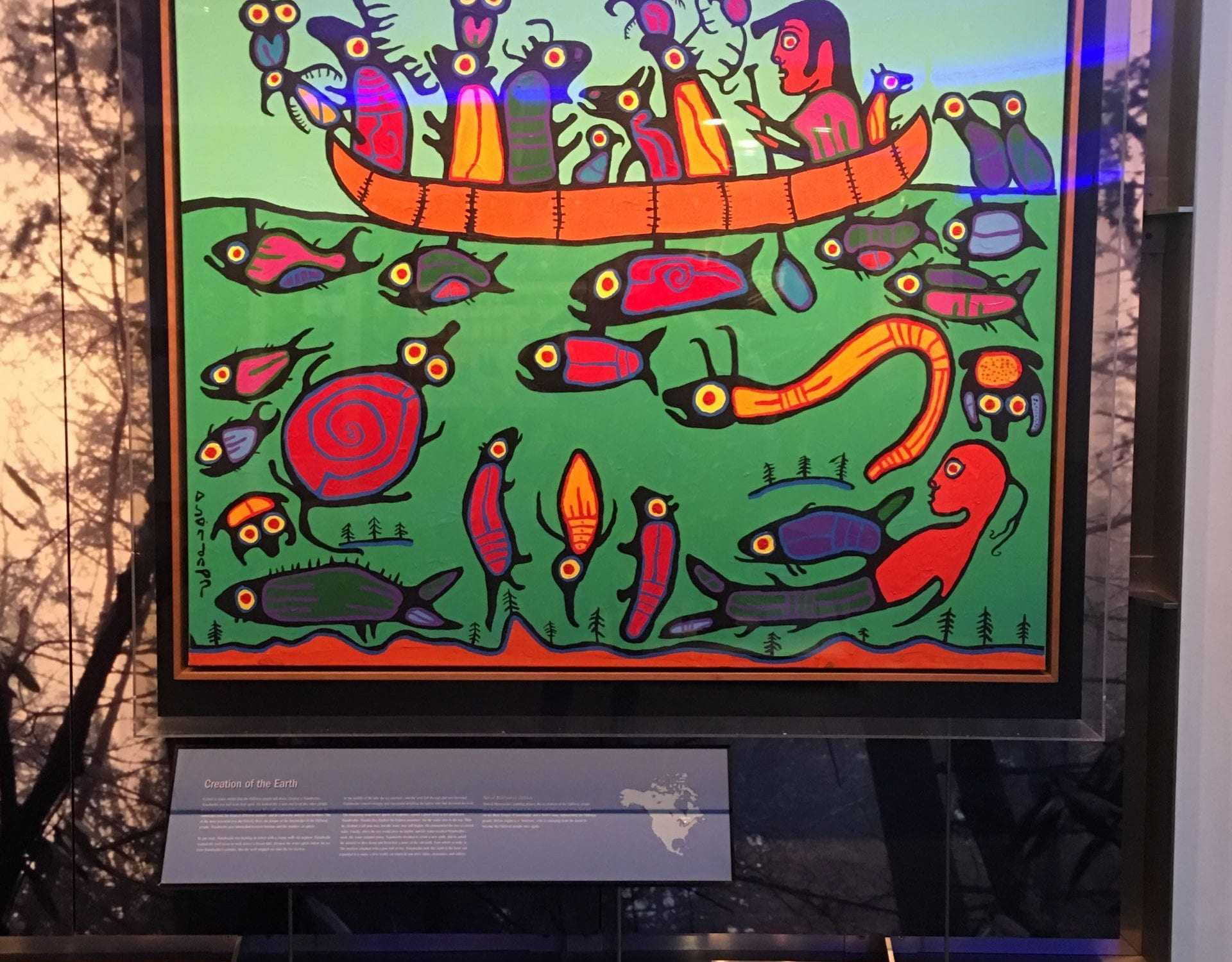Every time I visit the Pequot Museum, I find myself standing in contemplation of artist Norval Morriseau’s “Creation of the Earth.” The gorgeous, brightly colored painting depicts an Ojibway man in a canoe with birds and mammals. The creature at the bow of the canoe has a rack on it that would indicate it is a deer. According to the plate associated with the painting, the canoe also contains Bear, keeper of knowledge. Beneath the canoe is eels, fish, a turtle, and a merman, “who is emerging from the ocean to become the Ojibway people once again,” according to the same plate.
The legend the painting illustrates has the Ojibway hero Nanabozho, half man, half spirit, avenging the death of his nephew, a young wolf, drowned in a lake. His death was the result of the spirits of the water, enemies of Nanabozho, allowing the ice to crack beneath the wolf and causing it to fall to its death. Nanabozho kills the underwater spirits responsible.
In retaliation, the remaining spirits cause a flood to kill Nanabozho. He, however, uses magic to cause a pine tree he has climbed to grow to keep his head above water. The water stops at his neck. Nanabozho then asks his animal companions to dive below the water to retrieve a piece of old earth to create a new world.
What I think about in looking at this gorgeous rendering of a creation myth is how elements of the Ojibway tale echo the Judaic myth of Noah and the Great Flood (or perhaps it is the Bible story that echoes the Ojibway), namely that, in each case, the same cataclysmic event, a great flood, precipitates the establishment of the human race. And Morriseau’s placement of the prototypical Ojibway man in a canoe is analogous to the Jewish myth’s installation of Noah in the ark. That we come up with comparable stories across cultures to explain pivotal natural events is fascinating to me.

